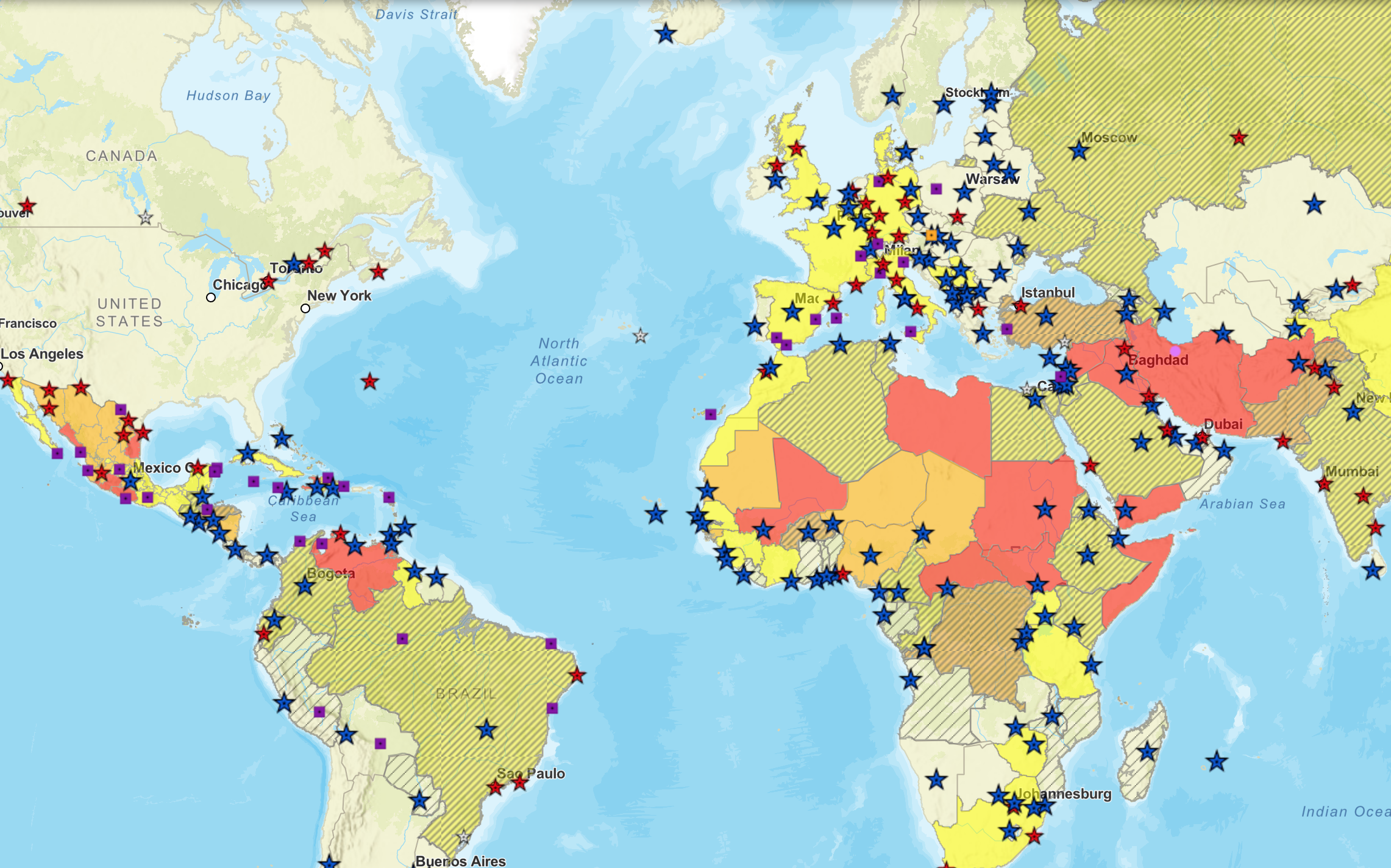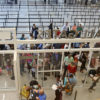After the Department of State of the United States introduced an improved travel advisory system of sharing information on Wednesday, January 10, 2018 which is designed to provide clear, timely, and reliable safety and security information worldwide for travelers who are citizens of the United States, a useful interactive dynamic mapping application was released; and a new risk indicator for kidnapping and hostage taking was added earlier this week.
Interactive Travel Advisory World Map With Embassies and Consulates of the United States — and New Kidnapping Risk Indicator Added for 35 Countries
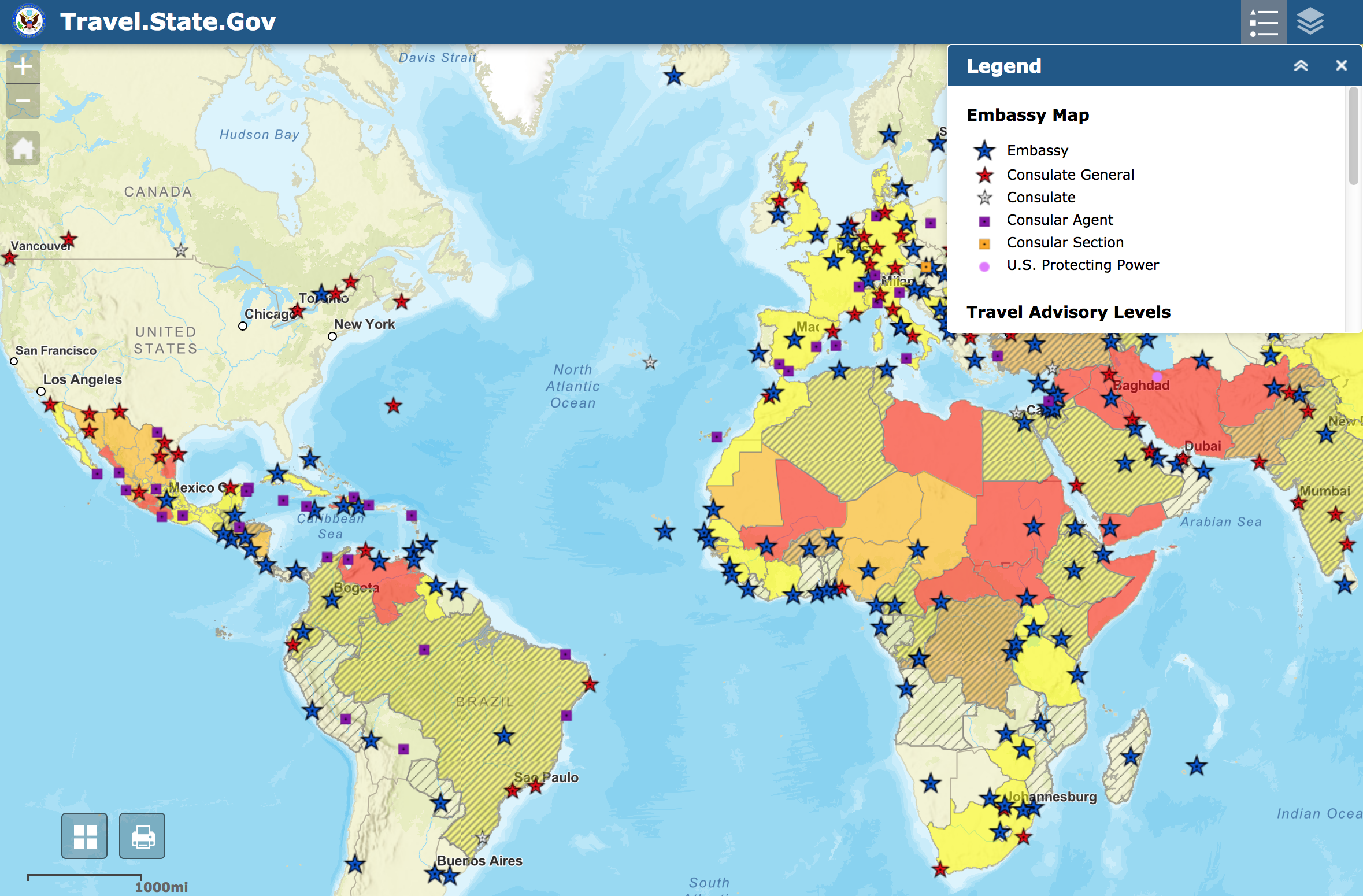
The interactive map shows where embassies and consulates of the United States are located worldwide — as well as current travel advisories for each country, which is supposedly updated on a daily basis.
When the travel advisories for each country had replaced previous travel warnings and travel alerts with the improved system, every country in the world was assigned its own travel advisory with the new system with levels of advice ranging from 1 to 4; and although the Department of State issues an overall travel advisory level for every country, levels of advice do vary for specific locations or areas within a country — and the interactive map clearly demonstrates this in countries such as Mexico.
The levels are as follows — along with their official colors:
- Level 1 — Exercise Normal Precautions This is the lowest advisory level for safety and security risk. There is some risk in any international travel. Conditions in other countries may differ from those in the United States and may change at any time.
- Level 2 — Exercise Increased Caution Be aware of heightened risks to safety and security. The Department of State provides additional advice for travelers in these areas in the travel advisory. Conditions in any country may change at any time.
- Level 3 — Reconsider Travel Avoid travel due to serious risks to safety and security. The Department of State provides additional advice for travelers in these areas in the Travel Advisory. Conditions in any country may change at any time.
- Level 4 — Do Not Travel This is the highest advisory level due to greater likelihood of life-threatening risks. During an emergency, the United States government may have very limited ability to provide assistance. The Department of State advises that United States citizens not travel to the country or leave as soon as it is safe to do so. The Department of State provides additional advice for travelers in these areas in the Travel Advisory. Conditions in any country may change at any time.

Varying Levels Within a Country
The Department of State will issue an overall travel advisory level for a country, but levels of advice may vary for specific locations or areas within a country. For instance, the Department of State may advise citizens of the United States to “Exercise Increased Caution” — which is Level 2 — in a country; but to “Reconsider Travel” — which is Level 3 — to a particular area within the country.
Risk Indicators
The detailed travel advisories will also will provide clear reasons for the level assigned, using established risk indicators, and offer specific advice to citizens of the United States who choose to travel there:
- C – Crime Widespread violent or organized crime is present in areas of the country. Local law enforcement may have limited ability to respond to serious crimes.
- T – Terrorism Terrorist attacks have occurred and/or specific threats against civilians, groups, or other targets may exist.
- U – Civil Unrest Political, economic, religious, and/or ethnic instability exists and may cause violence, major disruptions, and/or safety risks.
- H – Health Health risks — including current disease outbreaks or a crisis that disrupts the medical infrastructure of a country — are present. The issuance of a Centers for Disease Control Travel Notice may be a factor.
- N – Natural Disaster A natural disaster — or its aftermath — poses danger.
- E – Time-Limited Event A short-term event — such as an election, sporting event, or other incident — which may pose a safety risk.
- K – Kidnapping or Hostage Taking The risk of being kidnapped or taken as a hostage is at an elevated level, as it occurs in areas of the country. Read the travel advisory of the country for details. This risk indicator is new for 2019.
- O – Other There are potential risks not covered by previous risk indicators. Read the travel advisory of the country for details.
Examples of Each Travel Advisory Level
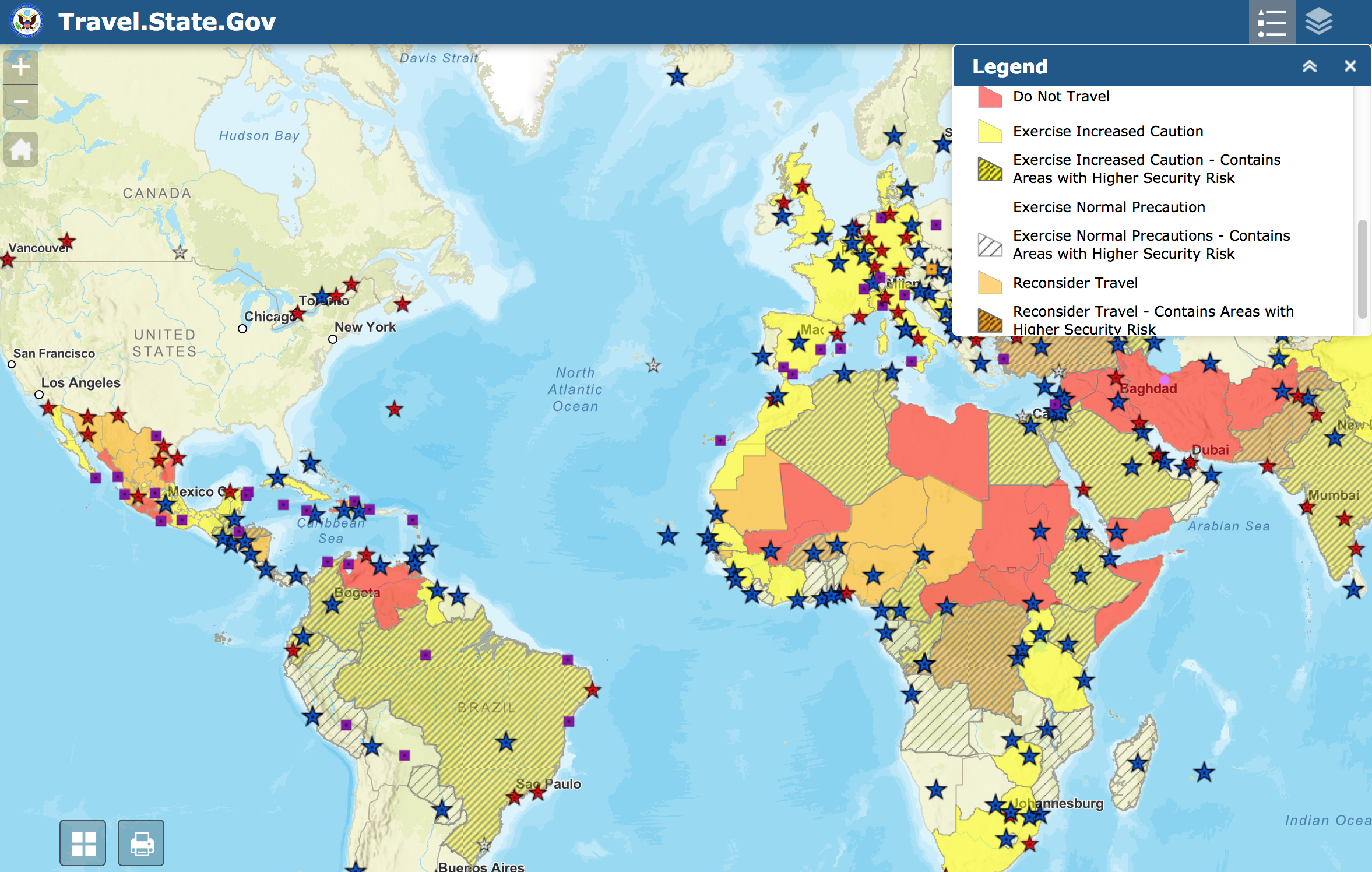
The official travel advisories of the following four countries are included in the graphic of the map which is shown above.
Click on each of the graphics — which are real examples of the travel advisory system — to get to the source to see the latest updated information.
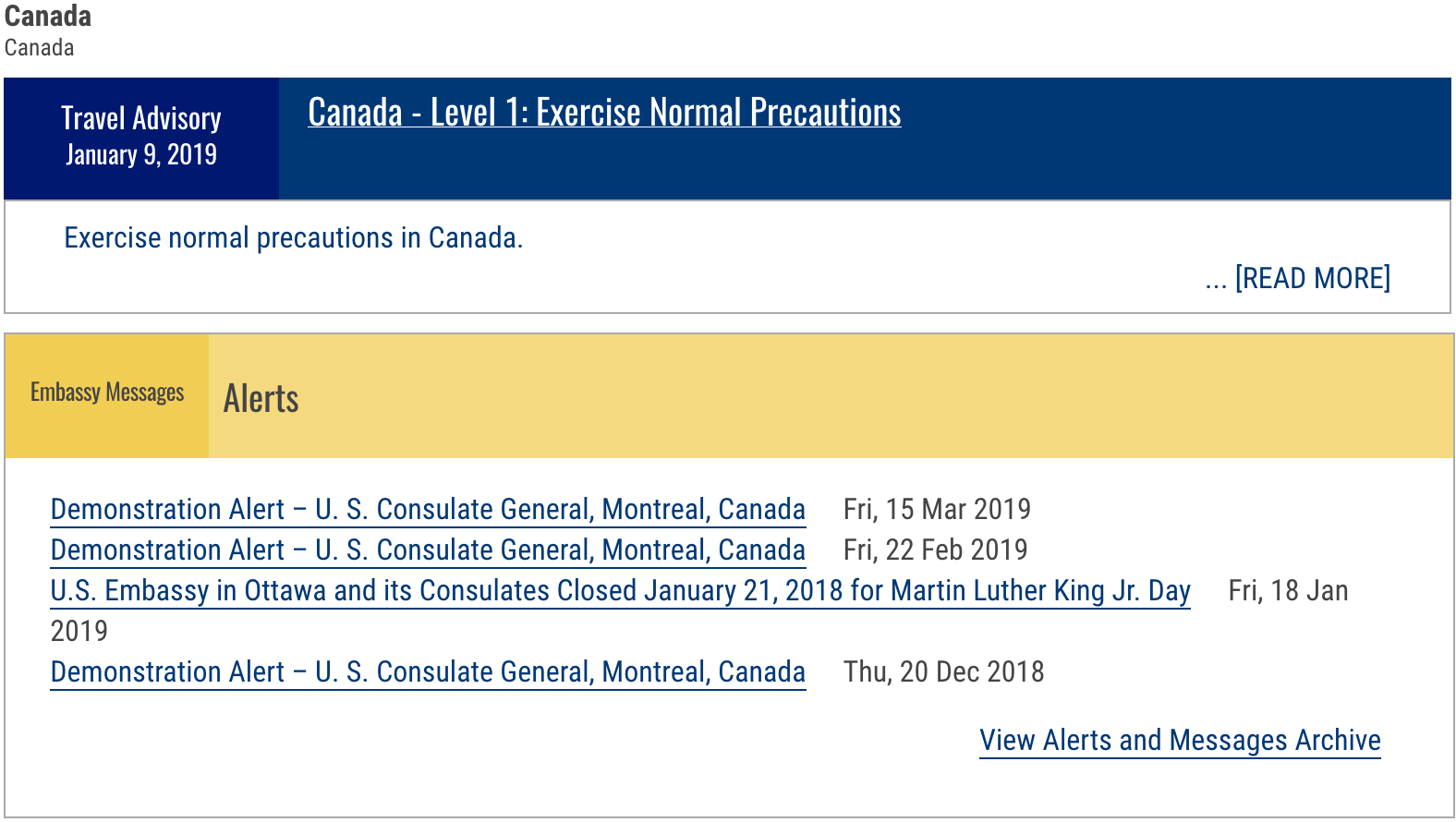
Level 1 — Exercise Normal Precautions is currently assigned to Canada, which has no risk indicators.
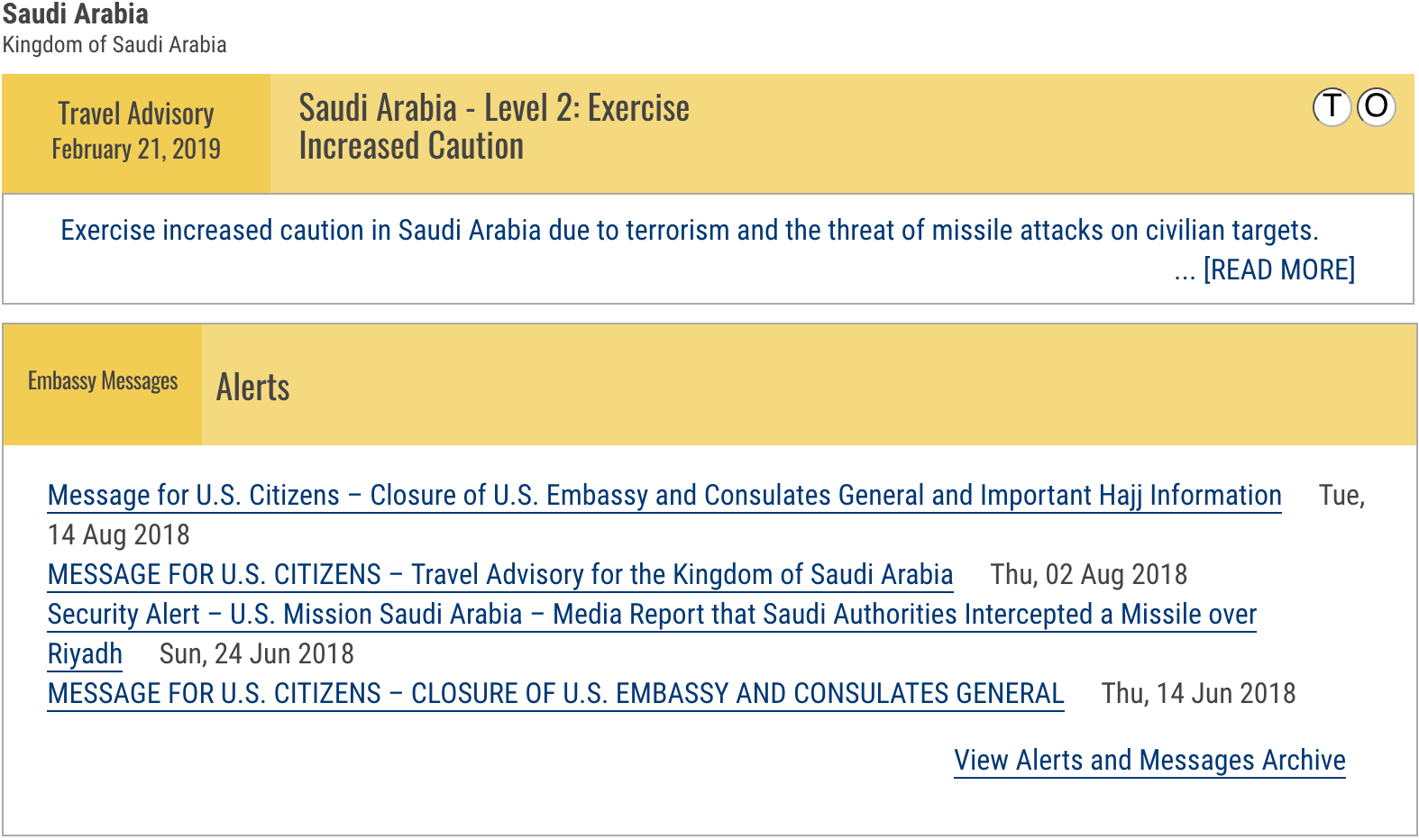
Level 2 — Exercise Increased Caution is currently assigned to Saudi Arabia, with terrorism and other as risk indicators.
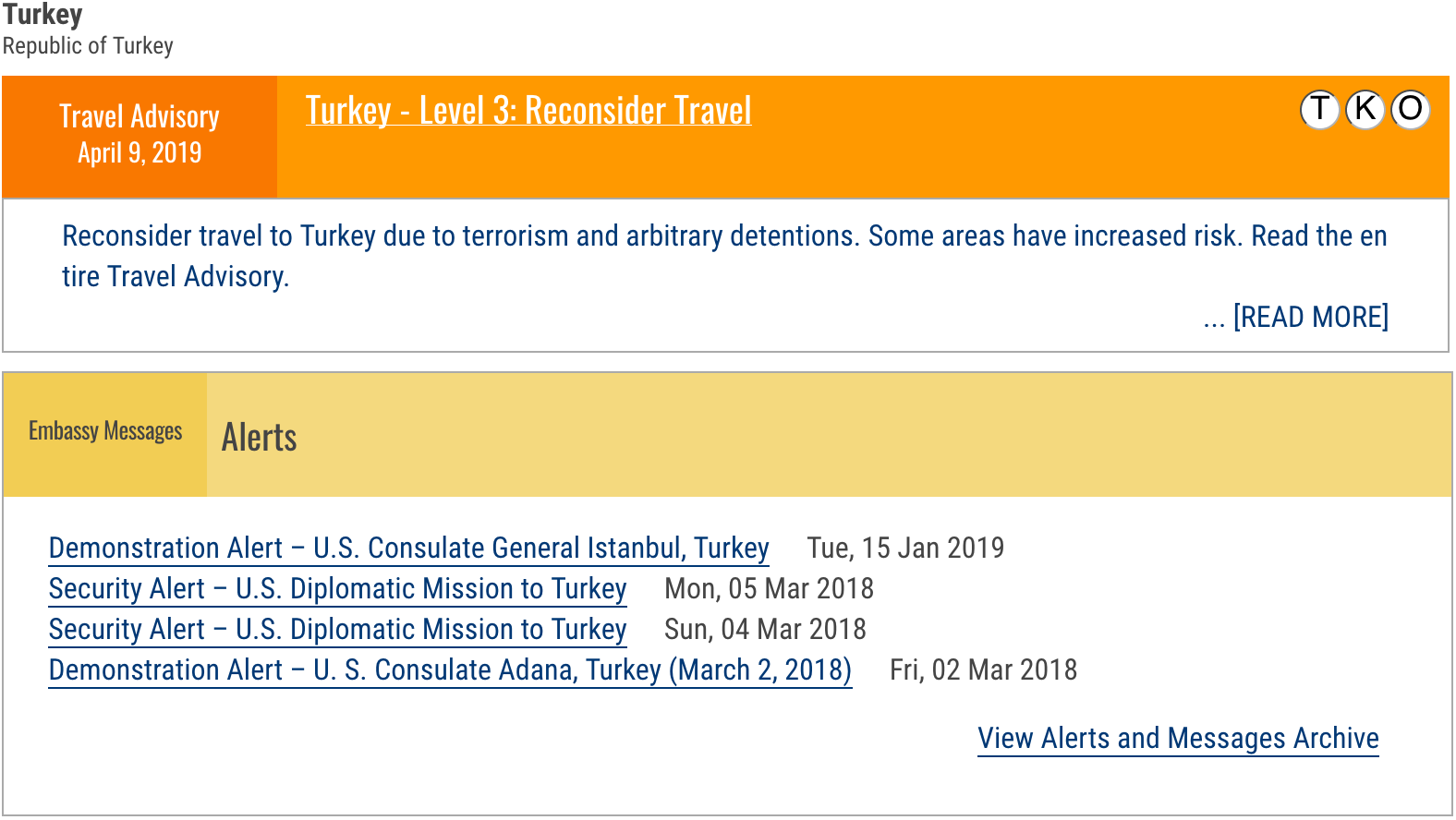
Level 3 — Reconsider Travel is currently assigned to Turkey, with terrorism, kidnapping and other as risk indicators.
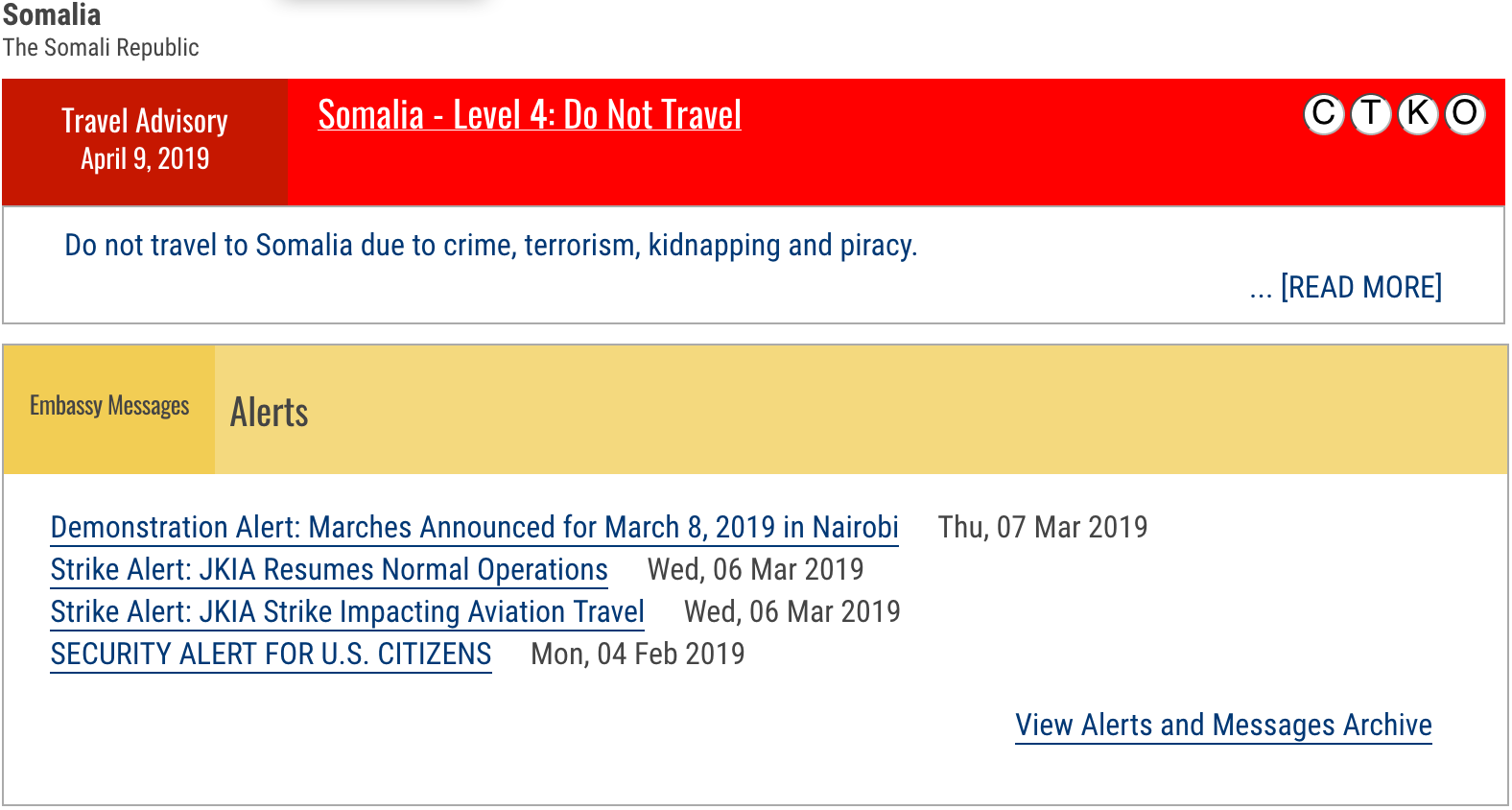
Level 4 — Do Not Travel is currently assigned to Somalia, with crime, terrorism, kidnapping and other as risk indicators.
Countries Designated With High Risk of Kidnappings
The 35 countries which currently appear on the initial list with a high risk of kidnappings or hostage takings — according to this article written by Danny the Deal Guru of Miles to Memories — are as follows:
- Afghanistan
- Mexico
- Phillippines
- Colombia
- Lebanon
- Mali
- Burkina Faso
- Libya
- Haiti
- Central African Republic
- Iraq
- Iran
- Nigeria
- Niger
- Pakistan — Balochistan province and Khyber Pakhtunkhwa (KPK) province, including the former Federally Administered Tribal Areas (FATA)
- Turkey — areas near the Syria and Iraq borders
- South Sudan
- Democratic Republic of the Congo — North Kivu and Ituri provinces
- Sudan
- Syria
- Cameroon — North, Far North, Northwest and Southwest regions, and parts of East and Adamawa regions
- Somalia
- Venezuela
- Papua New Guinea
- Kenya
- Ukraine — Eastern parts of the Donetsk and Luhansk oblasts
- Uganda
- Ethiopia — Somali Regional State
- Trinidad and Tobago
- Bangladesh — Southeast Bangladesh, including the Chittagong Hill Tracts
- Russia — North Caucasus, including Chechnya and Mount Elbrus
- Yemen
- Algeria — areas near the eastern and southern borders and areas in the Sahara Desert
- Malaysia — eastern area of Sabah State
- Angola — urban areas
Other Information
The Department of State reviews and updates each travel advisory as needed, based on changes to security and safety information. Additionally, United States embassies and consulates will now issue alerts to replace the current emergency messages and security messages. Alerts will inform citizens of the United States of specific safety and security concerns in a country — such as demonstrations, crime trends, and weather events.
The official hub for traveler information by the Department of State — travel.state.gov — hosts all travel advisories, recent alerts issued for each country, and an interactive map in mobile-friendly formats. Country pages on the site will continue to include all travel information currently available, including details about entry requirements, exit requirements, local laws and customs, health conditions, transportation, and other relevant topics.
To receive security and other important updates while traveling, citizens of the United States can enroll their travel plans in the Smart Traveler Enrollment Program (step.state.gov), and follow the Department of State via Twitter (@travelgov) and Facebook (facebook.com/travelgov).
Summary
I had no problem with using the former travel advisory system of the Department of State; but I do like the current graphical interface, as I find the revised system to be clearer, easier to understand, and quicker to process the information presented.
As I first mentioned in this article which I wrote on January 14, 2018, one potential minor improvement which I would suggest is to change the color of Level 1 to green and Level 2 to blue, as I still believe the that colors of Levels 2 and 3 are a little too similar upon first glance.
Nonetheless, the Department of State of the United States provides travelers with some useful information pertaining to safety…
…and you should always exercise a reasonable level of caution wherever you are in the world — even in the United States.
